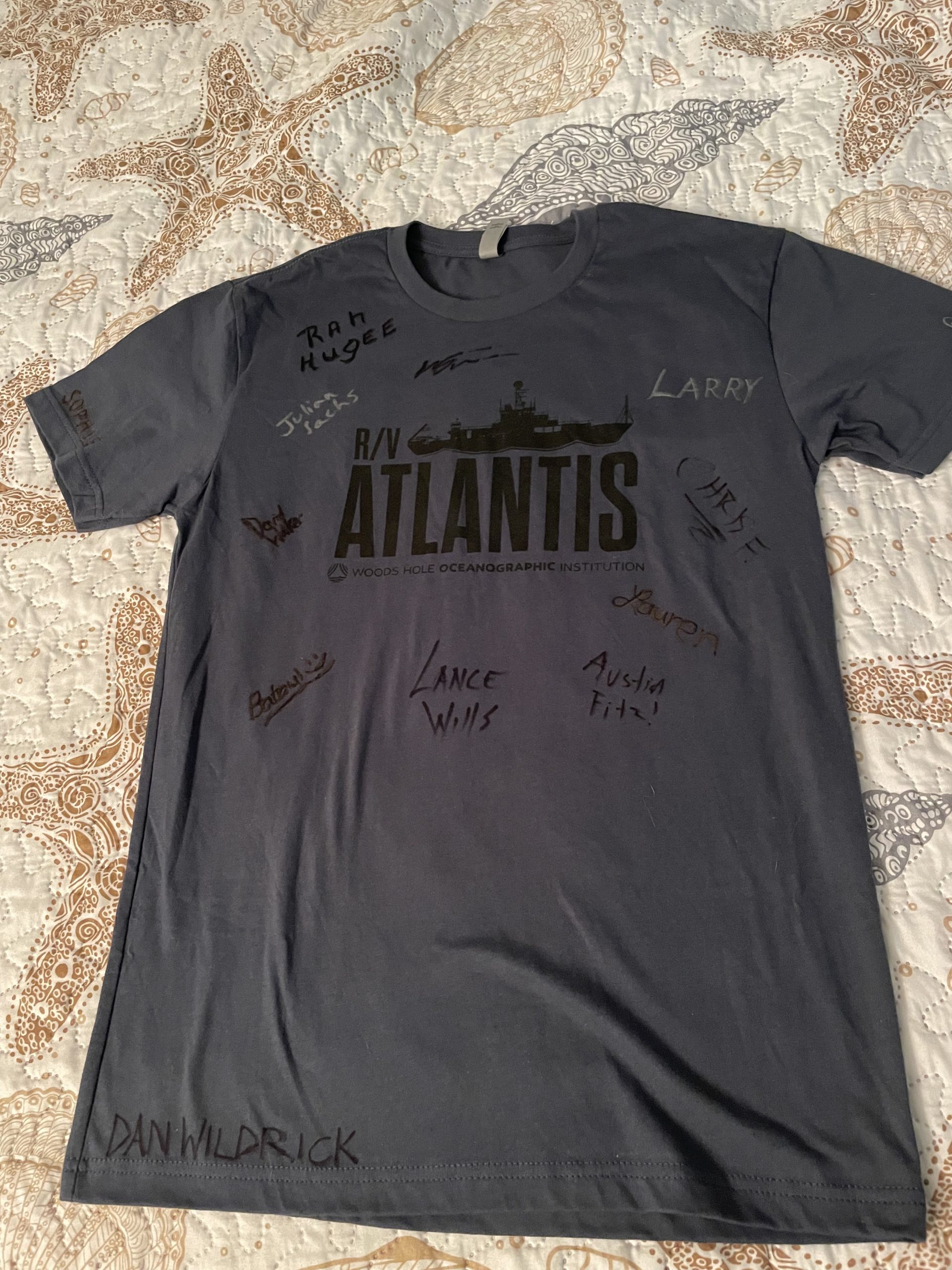
I am not sure even where to start with this post cruise blog. Simply put, being on the R/V Atlantis was single handedly one of the most amazing, incredible, life changing experiences I’ve had the privilege to be a part of. I just rewatched Ale Martinez’s video footage summarizing our trip and I cannot tell you how much I miss everyone’s smiling face and the laughs that came with it. The scientists and Atlantis crew were absolutely incredible to work with and I thoroughly enjoyed every moment. I would do it all again, in a heartbeat, despite getting sea sick one night.
During our voyage, which occurred back in June, the R/V Atlantis was successful in recovering cores of deep sea sediment off the coast of Nova Scotia and New Jersey. We were able to collect several samples from various depths along the ocean floor. These samples will be analyzed over the next couple of years by several universities, including Rutgers University and the University of Washington. Many of the samples are being stored at Woods Hole Oceanographic Institute (WHOI).

Since the cruise, I have been following WHOI on social media. We were able to use the R/V Atlantis for our PUFINS project due to the fact that the Alvin (an underwater submersible) was getting repaired. We didn’t need the Alvin, which is usually housed on the R/V Atlantis so our research was pushed forward a year to June 2022 instead of 2023. They finished the Alvins repairs during our voyage and it was placed back on the R/V Atlantis once we returned to shore on June 16th. The R/V Atlantis had a quick turn around to San Juan, Puerto Rico to test the Alvin out. And history was made, folks! The Alvin with a 3 man crew (Anthony Tarantino – WHOI, Fran Elder – WHOI, and Mike Yankaskas – NAVSEA), successfully dove to 6,453 meters, which is nearly 2,000 meters deeper than ever before! This depth puts roughly 99% of the global seafloor in Alvin’s reach – a great advancement to study the deep sea! You can read more about the Alvin’s successes here. I couldn’t be more proud! I read the article and shouted for joy for their new record. I felt such a personal connection, having been a part of the Atlantis crew only a few weeks prior.
Like the Atlantis crew, I have been busy since returning from the cruise. I attended 3 different educator workshops – one in the Bahamas studying coral reef ecology, one at Kennedy Space Center (KSC) with the National Endowment for the Humanities (NEH) titled Space Age for the Space Coast where I wrote a lesson connecting exploring space to exploring the ocean, and finally the EARTH (Educating and Research: Testing Hypotheses) workshop where I wrote a lesson on using satellites in conjunction with vessel and float data. During this time, my thoughts kept returning to my time on the ship. At KSC, I felt I had come full circle, looking at the Space Shuttle Atlantis knowing that it was named after the ship I just took a voyage on. The EARTH workshop was held at the University of Washington, where the PUFINS Project Principal Investigator, Dr. Julian Sachs, is from. I was given a copy of Current – a marine science journal. This copy contains an article a colleague and I wrote. I was sifting through the pages and it was then I recognized another name, Estelle Allan, who was a part of the science crew onboard the Atlantis. Estelle co-authored an article in the same journal! I cannot believe I could have been more interconnected to science and its studies than I have been this summer.




I look forward to hearing the results of the PUFINS project. I also plan on being a part of the Rutgers Geology Museum Open House on Saturday January 28th, 2023 where some of the lessons we have been working on will be unveiled. I tested out a few lessons in my middle and high school classes last May and I’m currently working on writing up official lesson plans for them. So stay tuned for the Emoji Core lesson on the Principles of Superposition as well as several other lessons on coring.



Upon return to my classroom, I wore my R/V Atlantis shirt (shown here) that everyone on the ship signed. I also returned styrofoam cups and sent out some mud samples to every classroom who attended a webinar with me – spanning from NY to California! There were several thank you letters that were sent out to myself and the other educators onboard. I couldn’t have been more excited to discuss my experience with my classes after returning home. Many students attended webinars while onboard the ship but now I was back in the room, face to face, and I couldn’t contain my enthusiasm for what went on while I was onboard. My district even wrote a follow up article about my trip (linked here). I hope this experience has also shown many students across the country the wide variety of careers in field science. Research vessels are just one avenue of field science. Having worked with scientists who have designed research vessels at Oregon State University, I also plan on revamping a lesson I helped write during the 2018 EARTH workshop titled “Can You build your Shipwright?” as well.


So I will be busy writing lessons, connecting the ship science to classrooms around the world while the scientists are busy analyzing all the cores we brought back. This was my first experience on a research vessel and hopefully, it won’t be my last. I am forever grateful to have been a part of this amazing team and I hope we continue to collaborate and connect for years to come.
